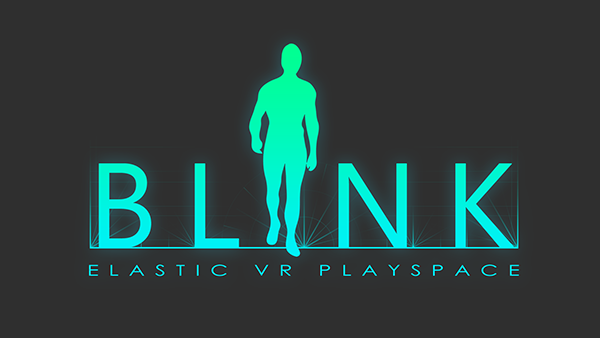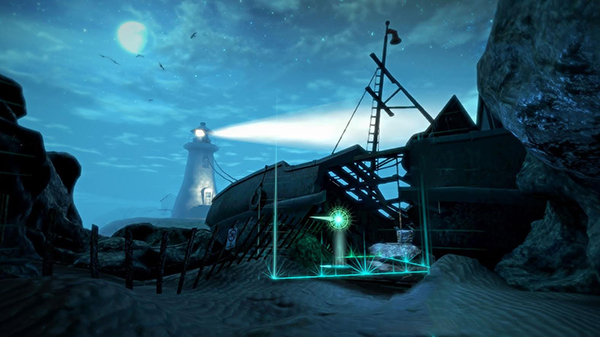Cloudhead Games' Blink Locomotion Tech Promises Better VR Experience In Your Space
Cloudhead Games, one of the original developers for the Vive, and with over three years of VR development experience, has come up with its own solution to the challenge of experiencing VR within a physical space. Moving around a space in a VR demo in a special room is one thing, but doing the same in your own home game room (or elsewhere) is another matter entirely. It's by nature impractical and difficult, and thus the need for solutions has arisen. Cloudhead Games is called Blink Locomotion Technology.
VR In Space (Not Outer Space, The Space In Your House)
Over the past year, we at Tom's Hardware have had a chance to experience a wide variety of VR tech. We tried the Oculus Crescent Bay prototype. Then at MWC and GDC we tried the HTC Vive, and most recently at E3 the Oculus CV1 headset and new Touch controllers, among others.
All those VR experiences were different, but one thing that is clear is that both VR hardware designers and software creators have already conquered the visual component of VR. Although there is still room for improvement, all of today's high-end VR systems produce immersive visuals, with high frame rates on low persistent displays. This, in conjunction with precise head tracking, helps generate a high level of presence, as in how real the VR space seems to your brain.
Now the bigger challenge on both the hardware and software side is control and movement in the virtual world. This is the next big hurdle to overcome in providing fully immersive VR experiences. How do you design a system that allows you to control the virtual world while still maintaining a believable level of presence? Valve's solution to that challenge was to create a room-scale VR experience with its Steam VR platform.
Using the HTC Vive headset and controllers with room-scale VR, your whole body becomes part of the virtual experience. You can walk in any direction around the play space and interact with it in a much more natural way by crouching, leaning and even jumping. This freedom of movement, along with the precisely-tracked Steam VR handheld controllers, provides the most believable virtual experience of any VR system today.
However, one of the limitations of room-scale VR is that your play space is limited and constrained by the real-world space available. Although Valve has said the playing area can be set to be both bigger and smaller, in all the demos of the HTC Vive that we've attended, 15 x 15 feet seems to be about the ideal size.
This meant that our experiences existed in the confines of that space, and the demos we tried cleverly worked within the constraints of the space to produce some incredible memories. Incredible memories, that is, confined to the deck of a boat, a small kitchen, or a test room at Aperture Science.
Get Tom's Hardware's best news and in-depth reviews, straight to your inbox.
Although these confined play spaces worked for the short demos designed to showcase the Vive and Steam VR, one of the concerns is how this limited play area will work in larger, more complex gaming environments. These constraints will work fine for some games, but they will be constricting for games that want to present the player with a larger world to explore.
The big challenge, then, for room-scale VR is how to allow the player to move around a larger space while still staying within the physical play area, and without breaking presence. This must also be achieved without making the player sick. Any additional motion presented to the player in the game world that isn't directly related to their own body's motions not only breaks the immersion but can also induce nausea.
In the video below, you can see Cloudhead Games Creative Director Denny Unger explain how this works.
Blink Locomotion
Blink Locomotion has three systems -- Cinematic Blink, Precision Blink and Volume Blink -- that allow players to move through large, open virtual worlds nausea-free without breaking presence. What Blink does, as the name implies, is it instantaneously teleports the player to a different part of the level as directed by the player -- as fast as the blink of an eye, as it were. This immediate transport is fast enough that your mind doesn't sense the movement, and thus it means that you shouldn't get sick.
Cloudhead also realizes that although the ideal play space is 15 x 15 feet or so, not every player using the HTC Vive is going to have the same area available to them. Using a UI that doesn't break immersion from the game world, you can also control the size of the play space you are transported to. Once in that space, Cloudhead's system uses subtle visual cues that delineate the play area, cues that increase their visual presence the closer you get to the physical boundaries of your actual play area.
In the above video, you can see how this works, with thin blue lines that pop up to show your boundaries and then quickly fade away.
Blink will first be available in Cloudhead's debut VR title, The Gallery: Call of the Starseed, Episode 1 of 4. The game is an expansion of the demo that it created to show off the HTC Vive when it was announced. The game will be launching with the HTC Vive in "Holiday 2015."
In the meantime, Cloudhead will be at PAX West in Seattle from August 28-31 and will be publicly revealing the first episode of its game. You'll be able to try it out there and see how Blink Locomotion works in person.
Alex Davies is an Associate Contributing Writer for Tom's Hardware and Tom's IT Pro, covering Smartphones, Tablets, and Virtual Reality. You can follow him on Twitter. Follow Tom's Hardware on Twitter, Facebook, and Google+.
-
picture_perfect Looks good but I don't see this working for fast paced shooters where you need to run around freely without boundry checks. You could tele-port everywhere but that's cheating :)Reply
How are the other players solving the locomotion problem?



